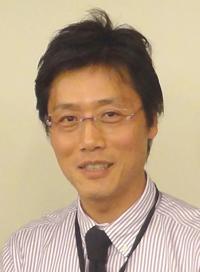event
Georgia Tech-COPE Distinguished Lecture Series - Chihaya Adachi
Primary tabs
The Georgia Tech-COPE Distinguished Lecture Series is pleased to welcome Dr. Chihaya Adachi from Kyushu University on Friday, August 23 at 4pm. Dr. Adachi will present a lecture entitled, "Materials Design for Highly Efficient Delayed Fluorescence". The lecture will be followed by a reception, which provides a chance for students, faculty, and staff to meet with him.
Dr. Adachi received his PhD from Kyushu University in 1991. In 2005 he was appointed Full Professor at the Center for Future Chemistry at Kyushu University. Since 2010 he is director of the Center for Organic Photonics and Electronics Research (OPERA) and he serves on the editorial board of Organic Electronics (Elsevier). His current research interests are in organic opto-electronics such as OLEDs, organic FETs, organic solar cells, organic laser diodes and fundamental photo-physical and electronic processes in organic solid-state thin films.
Materials Design for Highly Efficient Delayed Fluorescence
Although typical organic molecules are simply composed of carbon (C), hydrogen (H), nitrogen (N) and oxygen (O) atoms, carbon’s unique bonding manners based on sp3, sp2 and sp hybrid orbitals enable very complicated molecular architectures, leading to amazing functions in a wide variety of creatures and industrial products. In the last two decades, the allure of unlimited freedom of design with organic molecules has shifted a significant part of the research effort on electronics from inorganic into organic materials. In particular, great progress has been achieved in the development of organic light-emitting diodes (OLEDs). The successive progress of 1st generation OLEDs using fluorescent molecules and 2nd generation OLEDs using phosphorescent molecules solidified organic materials as a very attractive system for practical electronics.
In this study, we designed new advanced electroluminescent (EL) molecules composed of only conventional CHN atoms without any precious metals. With proper molecular design, the energy gap between the two excited states, i.e., singlet (S1) and triplet (T1) excited states, are minimized, promoting very efficient spin up-conversion from T1 to S1 states (reverse intersystem crossing (ISC)) while maintaining a rather high radiative decay rate of >106/s, leading to a very high fluorescence efficiency. Using these unique molecules, we realized a very high external EL efficiency that is comparable with those of high-efficiency phosphorescence-based OLEDs. Thus, these molecules harvest both singlet and triplet excitons for light emission under electrical excitation through fluorescence decay channels. Most recently, we designed a various kind of organic light-emitting materials demonstrating intense delayed fluorescence. Even though molecules have a small energy gap between singlet and triplet excited states, we succeeded for maintaining rather high radiative decay rate, i.e., high emission efficiency. In particular, 4CzIPN showed nearly 100% internal electroluminescence efficiency, indicating delayed fluorescence is a promising pathway for converting electrically generated excitons into photons.
Status
- Workflow Status:Published
- Created By:Jason Martin
- Created:04/26/2013
- Modified By:Fletcher Moore
- Modified:10/07/2016
Categories

